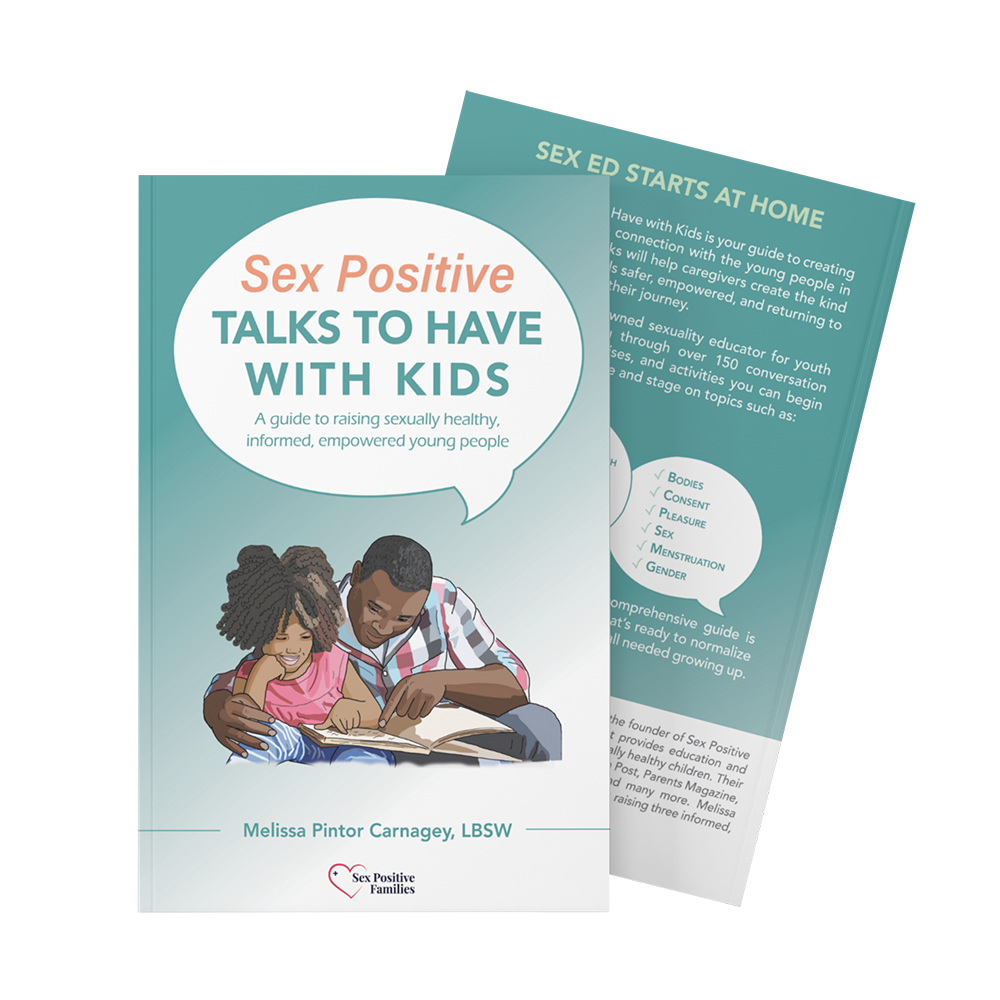-By: Melissa Pintor Carnagey, LBSW, CLC and Amanda Cooper-
Sex educators, Melissa Pintor Carnagey of Sex Positive Families and Amanda Cooper of Let’s Talk About Sex Ed, pulled their collective insights to share top tips on introducing consent to children prior to puberty, in ways that are both age-appropriate and sex-positive. Melissa and Amanda are both strong proponents of the power of sexual health education in the home as the strongest foundation to support sexual health in youth. Here are six strategies to help you create a culture of consent in your home early:
No ‘pretty please’
A great way to help your child understand early the concept of “no means no” is to make a house rule that when someone sets a boundary (ex. says no or stop), there is no negotiating, bargaining or complaining in response to the boundary. Teach members of the house that the appropriate response is something like, “Okay, I respect that.” It is also helpful to discuss feelings that can surface when receiving a no or rejection, which can support emotional intelligence. To be most effective, the house rule has to apply to all members of the home and may have to be reinforced, especially between rivaling siblings, until it becomes a habit.
Prepare for independence
From infancy through toddlerhood, we’re guiding our children’s care. Though they may not have full language development during these stages, we can prepare them for consensual touch by being vocal about the care we are giving. For example, we can say “I’m going to wipe your vulva now to help it stay clean. One day soon you will be wiping it on your own.” Talking through caring touch gets you in the habit of communicating consensually, in preparation for the time when your child can take the lead or express clear boundaries. Be prepared to make a healthy transition away from caring for your child’s body or taking on tasks for them as they become more independent, which can begin as early as age 4. They may not handle hygiene tasks perfectly but the practice will build their competence. During the transition period, be sure to ask permission to touch them when assisting and respect their no when they assert it. This reinforces the message that their body is theirs and consent is mandatory.
Ask your child for permission
It may be difficult to do this seeing as how we live in a world where parents make every single decision for their child, but it’s important to give your child a voice. A child needs to know at a young age that they can make decisions for themselves and be heard. Phrases such as “Can I pick you up?” “Do you want a hug?” “Is this okay?” can be a great learning tool, especially at such a pivotal point in figuring out their voice and how to use it. If, as a parent, you’re giving your child a hug and they say no, and you continue to do so this will not only make your child angry, it’ll teach them that their voice isn’t being heard and they can’t use it. Showing your child that you respect their decisions will give them more confidence to use it later on in life. Our children will learn whether their boundaries matter from how those closest to them react to it. Seeing our children as autonomous human beings with the right to self-determination, and owners of their bodies, are the best ways to support consent culture at home. This means not reacting with laughter, demeaning comments or dismissive responses when our children assert a boundary. For example, they know best when they’ve had enough to eat (trust me, they won’t starve) or who they are comfortable hugging and kissing (remember, it’s not their job to manage someone else’s feelings of rejection). By supporting their boundaries early, we send them the message that they deserve to have them respected no matter what or with whom.
Show them the difference between reality and media
In a digital-age world, there is a lot of misinformation out there about what sex and consent should look like. For example, there are commercials where consent is basically non-existent, cue the Famous Footwear ad from 2014 where a little boy and girl are in the shoe store and the boy downs some “liquid courage” (assumed punch beverage…but also what a message about alcohol and sexual assault as well?), and then proceeds to walk over to the girl and kisses her. The end shot shows him giving a thumbs-up pose with the tagline “victory is yours!” Not only is this a horrible example of what consent is (because there was none given!), this also makes the argument that a form of sexual harassment, even if it was from a child, is some sort of “victory”? No. If there is something that appears either online or on television that inaccurately displays what consent is, speak up! Tell your child that this isn’t okay and why. Explain to them what consent should look like in that situation and what was wrong with that depiction of it. Parents get this idea that if they just don’t talk about it they’re somehow shielding their children from premature sex, but that’s not the case. Your child will at some point in their lives inevitably have sex, better you show them the right way as to what consent should look like than see it in a Famous Footwear advertisement.
Give your kids alternatives
We’ve all heard this before: “Alright, time to go. Give your *insert family member* a hug!” Well, if your child says no, that leaves everyone with this awkward sort of feeling and silence as to what to do next. Instead of that, or worse forcing your child to give said relative a hug, try suggesting alternatives. Try saying, “That’s okay! How about we give *insert family member* a high-five or a fist bump or blowing them a kiss?” Show them that it’s not a punishment to not want to give their family member a hug. Forcing them to do so is not only an abuse of parental power, they’re going to think that a hug is now an obligatory form of affection instead of a consensual happy form of affection for all parties involved. People show affection in different ways. Just because your child doesn’t want to hug someone, doesn’t mean they love them any less. Giving your child an option to express their affection and love for someone will make them think that it’s okay to not want physical affection and still come across as a loving person without feeling like they’ve offended someone.
Teach every child
No matter the gender identity or abilities of your child, learning the skills of consent play an important role in keeping them safer and more confident within interactions with others. This includes teaching all children the accurate names for the genitals and functions of all body types, not just the ones that match the child’s gender identity. If we want to prepare our children for sexual health, empathy and healthy relationships, we must see the value in not siloing or avoiding topics based on our child’s gender identity or abilities.
For more helpful tools to support the talks, check out a list of books for all ages on consent and sexual health created by Sex Positive Families. We also recommend these great videos from Amaze.org and Blue Seat Studios.
 For a guide made just for parents and caregivers to tackle sexual health talks at every age and stage, check out our bestselling book Sex Positive Talks to Have With Kids: A guide to raising sexually healthy, informed, empowered young people.
For a guide made just for parents and caregivers to tackle sexual health talks at every age and stage, check out our bestselling book Sex Positive Talks to Have With Kids: A guide to raising sexually healthy, informed, empowered young people.

Sex Positive Talks to Have With Kids is the bestselling guide to creating an open, shame-free connection with the young people in your world.
It’s an inclusive, medically accurate, and comprehensive resource that walks you through over 150 conversation starters, reflection exercises, and activities you can begin implementing at every age and stage to normalize sexual health talks and become the trusted adult we all needed growing up.
